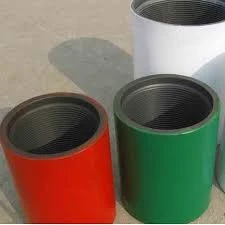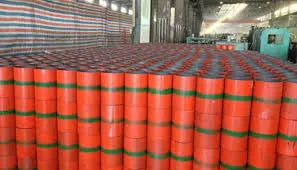- Afrikaans
- Albanian
- Amharic
- Arabic
- Armenian
- Azerbaijani
- Basque
- Belarusian
- Bengali
- Bosnian
- Bulgarian
- Catalan
- Cebuano
- Corsican
- Croatian
- Czech
- Danish
- Dutch
- English
- Esperanto
- Estonian
- Finnish
- French
- Frisian
- Galician
- Georgian
- German
- Greek
- Gujarati
- Haitian Creole
- hausa
- hawaiian
- Hebrew
- Hindi
- Miao
- Hungarian
- Icelandic
- igbo
- Indonesian
- irish
- Italian
- Japanese
- Javanese
- Kannada
- kazakh
- Khmer
- Rwandese
- Korean
- Kurdish
- Kyrgyz
- Lao
- Latin
- Latvian
- Lithuanian
- Luxembourgish
- Macedonian
- Malgashi
- Malay
- Malayalam
- Maltese
- Maori
- Marathi
- Mongolian
- Myanmar
- Nepali
- Norwegian
- Norwegian
- Occitan
- Pashto
- Persian
- Polish
- Portuguese
- Punjabi
- Romanian
- Russian
- Samoan
- Scottish Gaelic
- Serbian
- Sesotho
- Shona
- Sindhi
- Sinhala
- Slovak
- Slovenian
- Somali
- Spanish
- Sundanese
- Swahili
- Swedish
- Tagalog
- Tajik
- Tamil
- Tatar
- Telugu
- Thai
- Turkish
- Turkmen
- Ukrainian
- Urdu
- Uighur
- Uzbek
- Vietnamese
- Welsh
- Bantu
- Yiddish
- Yoruba
- Zulu
Jan . 26, 2025 01:22
Back to list
Tubing Coupling
In the ever-evolving field of oil and gas exploration, the reliability and efficiency of equipment play a pivotal role in the successful extraction of resources. Amongst the critical components in the drilling process, tubing couplings stand out as essential for maintaining the integrity and flow of fluids within a well. Understanding their function, types, and maintenance is not just recommended but imperative to ensuring seamless operations in challenging environments.
The credibility of a product in this niche is often gauged by standards and certifications, such as those from the American Petroleum Institute (API). Certified couplings assure compliance with industry benchmarks, thus safeguarding against the risks of mechanical failures or operational inefficiencies. Working with suppliers who adhere to these standards adds another layer of reliability to your operations. Trust is further built through diligent maintenance practices. Regular inspections and non-destructive testing (NDT) can detect early signs of wear or damage that could lead to catastrophic failures if left unchecked. A predictive maintenance schedule enables operators to pre-emptively replace worn-out components, maintaining continuous operation without unexpected shutdowns. Lastly, the importance of a comprehensive documentation and data management system cannot be overstated. Detailed records of coupling specifications, installation dates, and maintenance histories are invaluable. They provide the operational insights necessary for long-term planning and efficiency improvements. Implementing an advanced well integrity management system that includes these records can significantly reduce the risk of incidents and the overall cost of operation. In conclusion, tubing couplings may seem like a modest component in the grand scheme of oil and gas extraction, but their role is fundamental. Mastering their application and maintenance requires a blend of technical knowledge, procedural discipline, and strategic foresight. By prioritizing quality, expertise, and trust in their management, operators not only ensure smooth and efficient oilfield operations but also contribute to the sustainable and responsible extraction of natural resources.


The credibility of a product in this niche is often gauged by standards and certifications, such as those from the American Petroleum Institute (API). Certified couplings assure compliance with industry benchmarks, thus safeguarding against the risks of mechanical failures or operational inefficiencies. Working with suppliers who adhere to these standards adds another layer of reliability to your operations. Trust is further built through diligent maintenance practices. Regular inspections and non-destructive testing (NDT) can detect early signs of wear or damage that could lead to catastrophic failures if left unchecked. A predictive maintenance schedule enables operators to pre-emptively replace worn-out components, maintaining continuous operation without unexpected shutdowns. Lastly, the importance of a comprehensive documentation and data management system cannot be overstated. Detailed records of coupling specifications, installation dates, and maintenance histories are invaluable. They provide the operational insights necessary for long-term planning and efficiency improvements. Implementing an advanced well integrity management system that includes these records can significantly reduce the risk of incidents and the overall cost of operation. In conclusion, tubing couplings may seem like a modest component in the grand scheme of oil and gas extraction, but their role is fundamental. Mastering their application and maintenance requires a blend of technical knowledge, procedural discipline, and strategic foresight. By prioritizing quality, expertise, and trust in their management, operators not only ensure smooth and efficient oilfield operations but also contribute to the sustainable and responsible extraction of natural resources.
Next:
Latest news
-
Tubing Pup Joints: Essential Components for Oil and Gas OperationsNewsJul.10,2025
-
Pup Joints: Essential Components for Reliable Drilling OperationsNewsJul.10,2025
-
Pipe Couplings: Connecting Your World EfficientlyNewsJul.10,2025
-
Mastering Oilfield Operations with Quality Tubing and CasingNewsJul.10,2025
-
High-Quality Casing Couplings for Every NeedNewsJul.10,2025
-
Boost Your Drilling Efficiency with Premium Crossover Tools & Seating NipplesNewsJul.10,2025
Related Products







